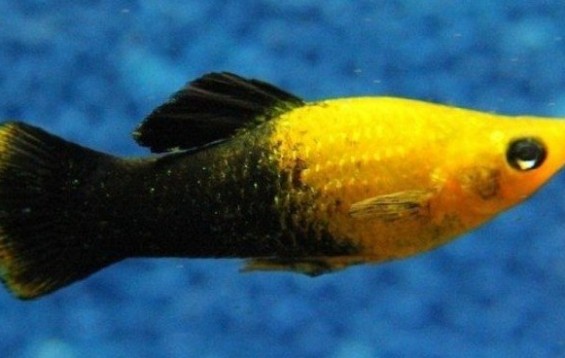Gold Dust Molly Fish
Gold dust molly fish are a popular freshwater fish that many aquarists enjoy having in their tanks. With their vibrant colors and unique patterns, they add a beautiful touch to any aquarium. However, keeping these fish healthy and happy can be challenging, and understanding their needs is key to their success.
Challenges of keeping gold dust molly fish
Gold dust molly fish are susceptible to various health issues and diseases. They are also prone to stress, which can be caused by a variety of factors such as poor water quality, overcrowding, and inadequate nutrition. These challenges can be frustrating for aquarists who want to provide the best possible care for their gold dust molly fish.
What are gold dust molly fish?
Gold dust molly fish are a type of mollies, also known as Poecilia sphenops, that originated in the freshwater rivers of Central and South America. As their name suggests, they have a beautiful gold dust-like appearance on their scales, which makes them stand out among other fish. They are relatively low-maintenance fish and can adapt well to a wide range of water conditions.
How to care for gold dust molly fish
When it comes to caring for gold dust molly fish, there are a few things to keep in mind. First, they require a tank that is at least 20 gallons, with ample room to swim and hide. Second, their diet should consist of a varied mix of high-quality flake food, frozen or live foods, and blanched vegetables. Third, they prefer water that is between 72-82°F, with a pH between 7.2-8.5 and moderately hard to hard water. Monitoring these parameters regularly is essential to keep them healthy.
My personal experience with gold dust molly fish
As an avid aquarist, I have kept gold dust molly fish in several of my tanks over the years. I have found that they are an excellent addition to any community tank, as they are peaceful and get along with most other fish species. They also breed easily in the right conditions, which can be both rewarding and challenging.

Common health issues with gold dust molly fish
Gold dust molly fish are prone to various diseases, including fin rot, ich, and swim bladder disorders. It is essential to monitor your fish's behavior and appearance regularly to catch any signs of illness early on. Providing a clean and healthy environment is critical to preventing these issues.

Nutrition for gold dust molly fish
Gold dust molly fish are omnivorous and require a varied diet to stay healthy. Their diet should consist of a mix of high-quality flake food, frozen or live foods such as brine shrimp and daphnia, and blanched vegetables such as spinach and zucchini. It is essential to feed them small amounts multiple times a day to prevent overfeeding and maintain water quality.

Gold dust molly fish breeding
Breeding gold dust molly fish can be a rewarding experience, but it requires specific conditions to be successful. The water temperature should be between 77-82°F, and the pH should be between 7.5-8.5. Having plenty of hiding spots and plants in the tank can also encourage breeding behavior. Female gold dust molly fish can give birth to up to 100 fry at once, so providing ample space for the offspring to grow is essential.
Question and Answer
Q: Can gold dust molly fish live with other fish species?
A: Yes, gold dust molly fish are peaceful and can live with most other fish species.
Q: Do gold dust molly fish require a heater?
A: Yes, gold dust molly fish prefer water temperatures between 72-82°F and require a heater to maintain these temperatures.
Q: How often should I feed my gold dust molly fish?
A: Gold dust molly fish should be fed small amounts multiple times a day to prevent overfeeding and maintain water quality.
Q: Do gold dust molly fish need a lot of light?
A: While gold dust molly fish do not require high-intensity lighting, they do need a proper day/night cycle to maintain their health and behavior.
Conclusion
Gold dust molly fish are a popular and low-maintenance freshwater fish species that can add a beautiful touch to any aquarium. While their care requirements can be challenging, providing them with a clean and healthy environment and a varied diet can lead to a happy and healthy fish. Understanding their needs and being proactive about their health is essential to their success in your aquarium.
Gallery
GOLD DUST MOLLY - Goodjoseph LIVE Fish Store
Photo Credit by: bing.com / freshwater tropical rumeni poecilia mollies sphenops samec daimon
GOLD DUST LYRETAIL MOLLY - Regular 2-2.25 Inches - Bluegrassaquatics.com
Photo Credit by: bing.com / lyretail ikan platy jenis breeding pez fishes inches mollies harga peces hias perbedaan aquarium populer membedakan emaze
Gold Dust Molly - Mollies - Poecilia Sphenops | Tank Facts
Photo Credit by: bing.com / molly gold dust fish mollies
Gold Dust Sphenops Molly | Arizona Aquatic Gardens
Photo Credit by: bing.com / molly dust gold fish mollies live livebearers types tropical behavior poecilia bearer freshwater aquarium yucatan add overview breeding mates tank
Sacramento Aquarium Society - Spawning Report - Gold Dust Molly
Photo Credit by: bing.com / molly gold dust poecilia male pond tony month two old

